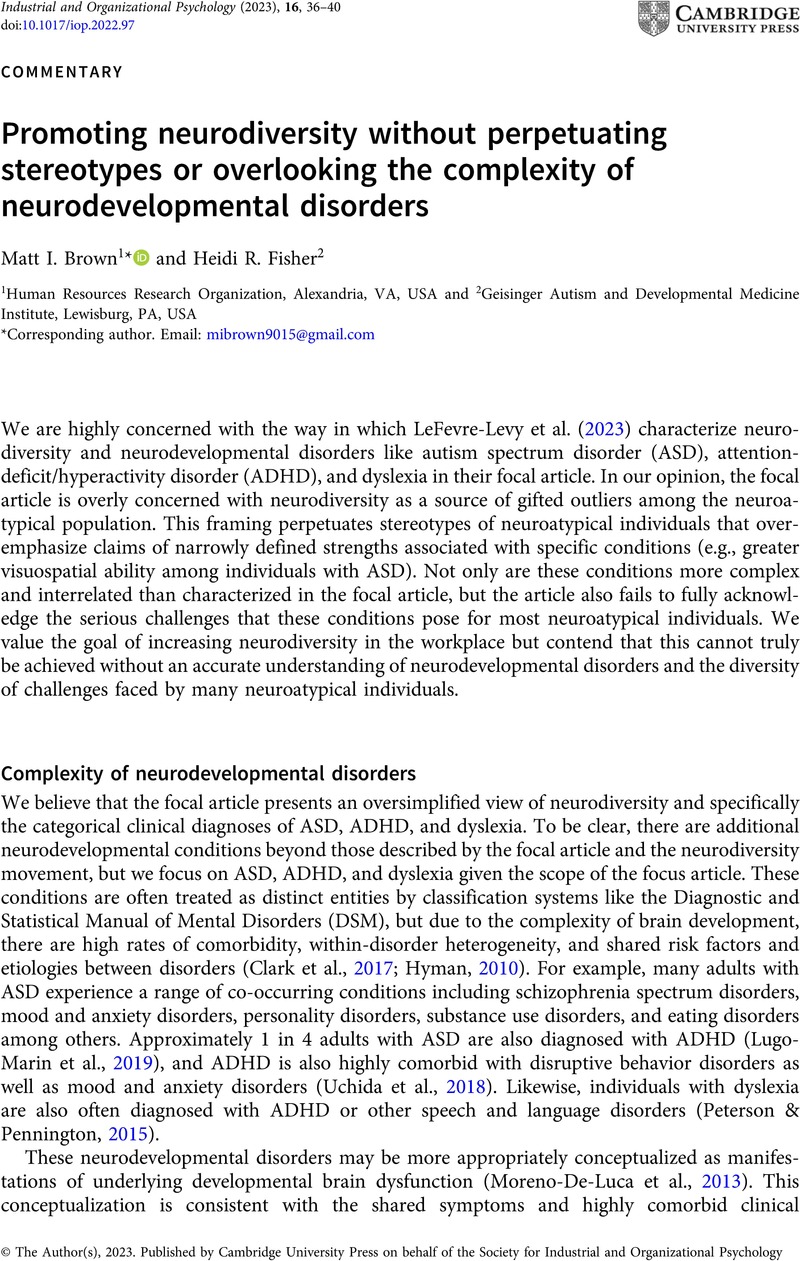Crossref Citations
This article has been cited by the following publications. This list is generated based on data provided by Crossref.
Zerva, Irini K.
and
Bonti, Eleni
2023.
Developmental Language Disorders in Childhood and Adolescence.
p.
157.
Allen, Robert A.
Dickmann, Michael
Priscott, Tamsin
and
White, Gareth R. T.
2023.
Exploring positive and negative intersectionality effects: an employment study of neurodiverse UK military veterans.
The International Journal of Human Resource Management,
p.
1.





